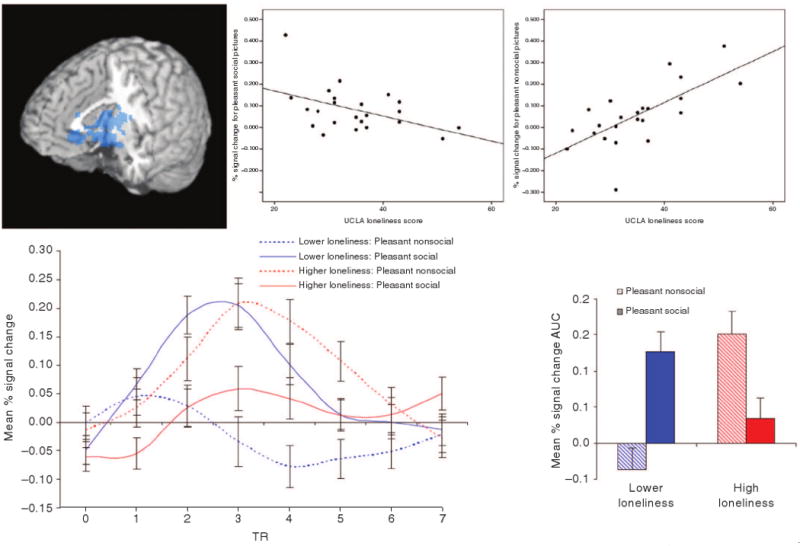Figure 2.

A cluster of voxels centered in the ventral striatum, but extending to the amygdala and portions of the anterior thalamus, showed an inverse relationship between loneliness and activation in the pleasant social–pleasant nonsocial contrast. The scatterplots demonstrate the association between loneliness and activity in this cluster in response to pleasant social pictures [r(21) = _.46, p < .05], and in response to pleasant nonsocial pictures [r(21) = .69, p < .001]. Estimated impulse response functions and mean percent signal change AUC for participants lower and higher in loneliness (estimates at 1 SD above and below the mean UCLA score in our sample are presented) show a crossover interaction for the relationship between loneliness and brain responses to pleasant social and pleasant nonsocial stimuli, such that nonlonely participants exhibit greater activation to pleasant pictures that contain social content and lonely participants exhibit greater activation to pleasant nonsocial pictures. (From Cacioppo, J. T., Norris, C. J., Decety, J., Monteleone, G., & Nusbaum, H. (2009). In the eye of the beholder: Individual differences in perceived social isolation predict regional brain activation to social stimuli. Journal of Cognitive Neuroscience, 2009 78.)
